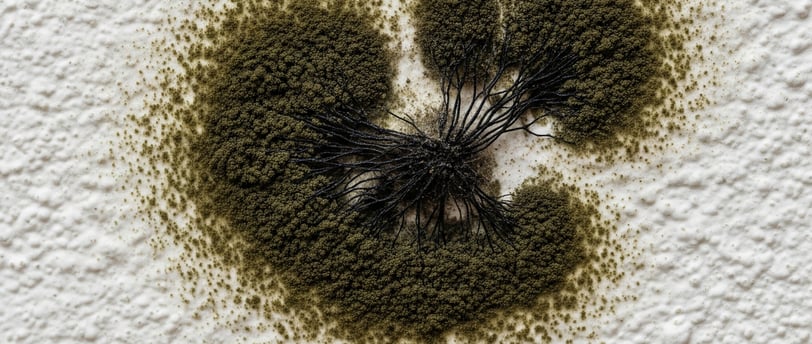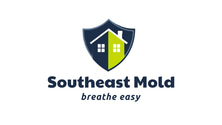Cladosporium Mold: Symptoms, Health Effects, Causes, and Appearance
Southeast Mold
5/20/2025


Cladosporium Mold: Symptoms, Health Effects, Causes, and Appearance
Cladosporium is one of the most common indoor and outdoor molds, frequently found in homes and businesses. While generally considered less toxic than some other mold species, prolonged exposure can still cause significant health issues, especially for individuals with allergies, asthma, or weakened immune systems.
What Does Cladosporium Mold Look Like?
● Color: Cladosporium mold typically appears as green, brown, or black spots.
● Texture: It often has a powdery or velvety texture.
● Common Locations: This mold thrives in damp areas such as basements, bathrooms, air conditioning units, and even on wallpaper, carpets, and window frames.
Health Effects of Cladosporium Exposure
Exposure to Cladosporium mold can cause a range of health problems, particularly in those with respiratory conditions or allergies. Some common symptoms include:
● Respiratory Issues: Coughing, wheezing, shortness of breath, and worsened asthma symptoms.
● Allergic Reactions: Sneezing, runny nose, itchy eyes, and skin irritation.
● Infections: In rare cases, prolonged exposure can lead to fungal infections in the lungs or sinuses, particularly in immunocompromised individuals.
What Causes Cladosporium Mold Growth?
Cladosporium thrives in environments with high humidity and moisture. Some of the most common causes of Cladosporium mold growth include:
● Water Leaks: Leaking pipes, roofs, or foundations create the perfect environment for mold.
● Poor Ventilation: Areas with inadequate airflow, such as bathrooms and basements, trap moisture and allow mold to grow.
● Condensation: HVAC systems and poorly insulated windows can create condensation, leading to mold development.
● Flood Damage: Homes or businesses affected by flooding are particularly vulnerable to Cladosporium and other mold infestations.
Real-Life Cases of Cladosporium Mold Exposure
Many homeowners and business owners have unknowingly lived or worked in mold-infested environments. Some reported suffering from unexplained respiratory symptoms for months before discovering Cladosporium hidden behind walls or in air ducts. In some severe cases,
families had to relocate while professional mold remediation was performed to restore indoor air quality.
How to Prevent and Remove Cladosporium Mold
● Control Moisture: Keep indoor humidity levels below 50% and fix any leaks immediately.
● Improve Ventilation: Use exhaust fans in bathrooms and kitchens to reduce humidity.
● Regular Cleaning: Clean damp areas frequently and use mold-resistant products in high-risk areas.
● Professional Mold Remediation: If mold covers a large area (more than 10 square feet), it’s best to hire a professional mold remediation company.
If you suspect Cladosporium mold in your home or business, don’t wait until it affects your health. Contact us today to get professional testing and removal services. 770-744-3383 or info@southeastmold.com
